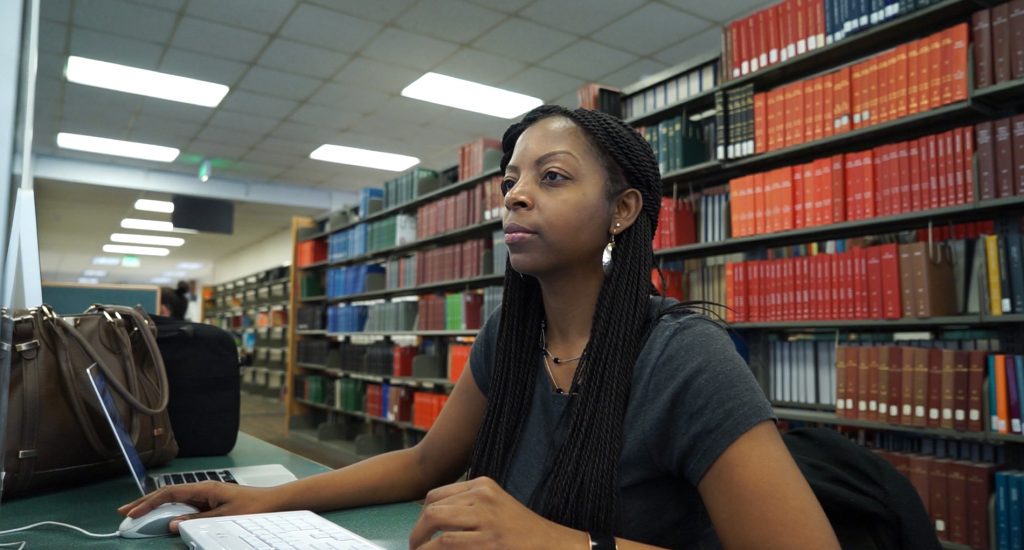
African American Language (AAL) may be one of the most misunderstood languages and often is dismissed as slang, improper, or incorrect.
In order to bring a better understanding to this language, Writing, Rhetoric, and American Cultures Ph.D. Candidate Shenika Hankerson is working to dispel some of the misconceptions associated with AAL.
Focusing on the sociocultural, historical, and political dimensions of AAL, Hankerson’s research explores the intersections among race, class, language, writing, and equity, particularly as these relate to urban African American adolescents and young adults.
“My research focuses on the theoretical and pedagogical dimensions of a more humanizing education for African American students who use features of AAL to communicate,” Hankerson said. “What I really focus on is how urban African American students use language within oral and written contexts and how educators can affirm and build upon these contexts.”
Hankerson, who has taught postsecondary writing for more than 10 years, says her research was inspired by her own teaching experience. She noticed a significant amount of urban African American students coming into the classroom with “almost this baggage,” saying things like “My writing is bad,” or “I really don’t like writing.” Hankerson added that these were narratives the students were often told (and learned) as they were coming through the primary and secondary school system.
There’s a diverse world out there and we have to learn how to interact and engage with different cultures, different races, different ethnic groups. It’s really important for us to consider these things and keep talking about them.
“I noticed their writing wasn’t bad at all,” Hankerson said. “There were just characteristics of their linguistic background, which is AAL, present in their writing.”
“Once the students learned what they were doing wasn’t wrong or bad, they were more comfortable with engaging in the writing process,” Hankerson said.
These are things we have to keep talking about and working with, so these students can feel more confident about their writing,” she said. “And, also, so teachers are aware of some of the linguistic moves that urban African American students and other linguistically diverse students may make in writing.”
Hankerson adds that it’s important for us to look at different ethnic and cultural practices and build more robust contexts for sensitivity, inclusivity, diversity, and respect around these practices.
“There’s a diverse world out there,” she said, “and we have to learn how to interact and engage with different cultures, different races, different ethnic groups. It’s really important for us to consider these things and keep talking about them.”
Hankerson’s research has been supported by several grants and awards, including the Early Career Educator of Color Leadership Award from the National Council of Teachers of English and the Scholars for the Dream Award from the Conference on College Composition and Communication.
Her research findings have been published in peer-reviewed journals, including MSU AGEP Science Today Bulletin, and presented at national and international conferences.


